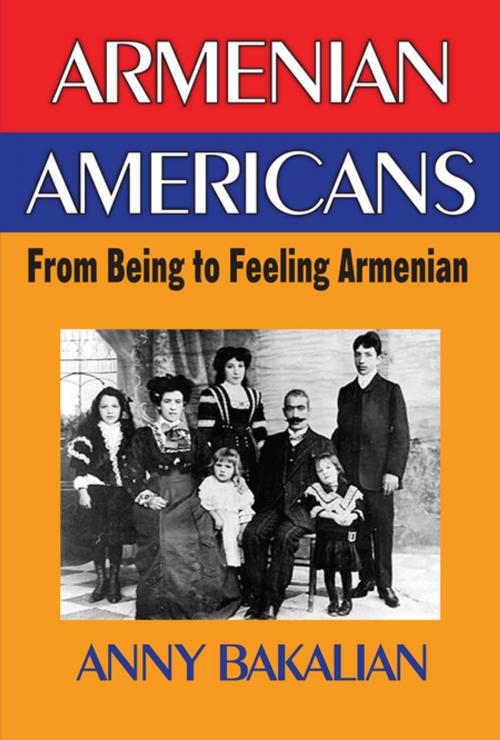Armenian-Americans
From Being to Feeling American
Nonfiction, Reference & Language, Language Arts, Communication, Social & Cultural Studies, Social Science, Sociology| Author: | Anny Bakalian | ISBN: | 9781351531153 |
| Publisher: | Taylor and Francis | Publication: | July 12, 2017 |
| Imprint: | Routledge | Language: | English |
| Author: | Anny Bakalian |
| ISBN: | 9781351531153 |
| Publisher: | Taylor and Francis |
| Publication: | July 12, 2017 |
| Imprint: | Routledge |
| Language: | English |
Assimilation has been a contentious issues for most immigrant groups in the United States. The host society is assumed to lire immigrants and their descendants away from their ancestral heritage. Yet, in their quest for a "better" life, few immigrants intentionally forsake heir ethnic identity; most try to hold onto their culture by transplanting their traditional institutions and recreating new communities in America. Armenian-Americans are no exception. Armenian-Americans have been generally overlooked by census enumerators, survey analysts, and social scientists because of their small numbers and relative dispersion throughout the United States. They remain a little-studied group that has been called a "hidden minority." Armenian Americans fills this significant gap. Based on the results of an extensive mail questionnaire survey, in-depth interviews, and participant observation of communal gatherings, this book analyzed the individual and collective struggles of Armenian-Americans to perpetuate their Armenian legacy while actively seeking new pathways to the American Dream. This volume shows how men and women of Armenian descent become distanced from their ethnic origins with the passing of generations. Yet assimilation and maintenance of ethnic identity go hand-in-hand. The ascribed, unconscious, compulsive Armenianness of the immigrant generation is transformed into a voluntary, rational, situational Armenianness. The generational change is from being Armenian to feeling Armenian. The Armenian-American community has grown and prospered in this century. Greater tolerance of ethnic differences in the host society, the remarkable social mobility of many Armenian-Americans and the influx of large numbers of new immigrants from the Middle East and Soviet bloc in recent decades have contributed to this development. The future of this community, however, remains precarious as it strives to adjust to the ever changing social, economic, and political conditions affec
Assimilation has been a contentious issues for most immigrant groups in the United States. The host society is assumed to lire immigrants and their descendants away from their ancestral heritage. Yet, in their quest for a "better" life, few immigrants intentionally forsake heir ethnic identity; most try to hold onto their culture by transplanting their traditional institutions and recreating new communities in America. Armenian-Americans are no exception. Armenian-Americans have been generally overlooked by census enumerators, survey analysts, and social scientists because of their small numbers and relative dispersion throughout the United States. They remain a little-studied group that has been called a "hidden minority." Armenian Americans fills this significant gap. Based on the results of an extensive mail questionnaire survey, in-depth interviews, and participant observation of communal gatherings, this book analyzed the individual and collective struggles of Armenian-Americans to perpetuate their Armenian legacy while actively seeking new pathways to the American Dream. This volume shows how men and women of Armenian descent become distanced from their ethnic origins with the passing of generations. Yet assimilation and maintenance of ethnic identity go hand-in-hand. The ascribed, unconscious, compulsive Armenianness of the immigrant generation is transformed into a voluntary, rational, situational Armenianness. The generational change is from being Armenian to feeling Armenian. The Armenian-American community has grown and prospered in this century. Greater tolerance of ethnic differences in the host society, the remarkable social mobility of many Armenian-Americans and the influx of large numbers of new immigrants from the Middle East and Soviet bloc in recent decades have contributed to this development. The future of this community, however, remains precarious as it strives to adjust to the ever changing social, economic, and political conditions affec















